Lichenology is often regarded as an amateur subject, where the study of lichens is considered a leisurely activity or hobby. However, many people are unaware of the various job opportunities available within Britain and Ireland (alongside those overseas), where many lichenologists have turned their personal interest into a payed profession – where career prospects are showcased on this page.
Studying lichens requires a strong knowledge-base and skillset, which is highlighted by the lichenologists (people who study lichens) listed below. These skills are desirable for lichen-specialist jobs, but are also more widely transferable to other jobs within the natural history sector. The skills and knowledge acquired and developed through lichenology are advantageous for any career in natural history, reflecting abilities to identify and record, analyse data and model statistics, engage and educate, alongside policy and advocacy, plus much more.
The lichenologist profiles found on this page include those for researchers / lecturers, museum curators, government bodies, third sector jobs, lichen consultants and advanced studies (PhD & postdocs). For more information on careers in lichenology, contact April Windle (Education and Promotions Committee Chair) at education-promotion@britishlichensociety.org.uk
RESEARCHERS & LECTURERS
Chris Ellis - Senior Research Scientist
Royal Botanic Garden Edinburgh
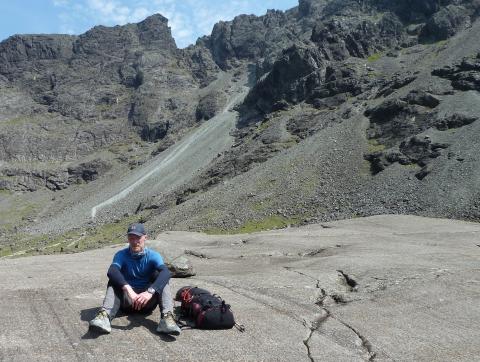
I manage a team of specialists at the Royal Botanic Garden Edinburgh (RBGE), who are working on lichens and other fungi, bryophytes and algae, and I conduct my own research on lichens. This involves submitting grants to secure funding, designing experiments and undertaking analysis, writing papers and presenting findings at workshops and in reports to other researchers, policy makers and conservationists. I have a particular interest in lichen epiphytes; they are excellent indicators of environmental change, and they are useful in ecology to investigate the fundamental processes that can explain biodiversity.
The projects I’m currently involved with include (i) understanding the effects of nitrogen pollution on ecosystems in South Asia, (ii) the role of microclimates in protecting species threatened by climate change in temperate rainforests from Scotland to Chile, and (iii) how historic landscape change has created patterns of biodiversity in today’s landscape, and what that means for the future.
I’ve always been interested in understanding how nature works, and lichens are a vehicle for asking some of the most interesting and important questions. However, I always tended towards the ‘big stuff’ – biogeography – rather than the ‘small stuff’ like genetics.
I studied palaeoecology for my PhD – reconstructing past environments – and then also for a post-doc when I worked in the arctic and noticed that I was surrounded by lichens. This piqued my interest, and so I applied for and got a job researching lichen physiology at the University of Nottingham, and then a job at RBGE studying patterns of lichen diversity, where I’ve remained ever since. One of the great privileges at RBGE is supervising students and post-docs, who are pushing the boundaries of our knowledge, as well as working collaboratively with other researchers from all over the world. My favourite lichen is Pectenia plumbea.
Becky Yahr - Lichen Biodiversity Scientist
Royal Botanic Garden Edinburgh
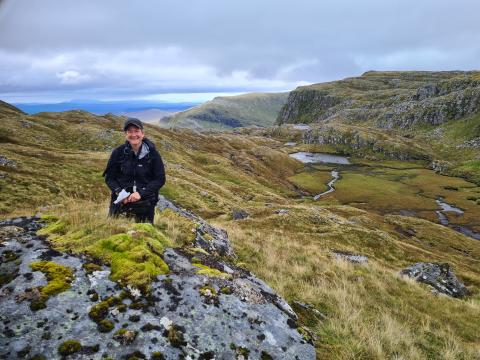
Hi, I’m Becky Yahr and I’m a lichenologist at the Royal Botanic Garden Edinburgh, where my role is a mix of research and teaching. As with most lichenologists, I have a certain amount of self-taught background, thankfully supported by key people just before I might have thrown in the towel – after all, my first lichen ID book had the cover photo upside down and started out with a K test in the very first couplet – what?!! Fortunately, I had a lot of botanical survey and field experience under my belt when I moved to lichens, and I surely benefitted hugely from learning from some of the best at crucial moments. A door definitely opened for me while I was trying hard – and not exactly succeeding in learning lots of lichens in Florida - when Sylvia and Steve Sharnoff got in touch to photograph that small handful of species that I did feel confident about (a few endemic Cladonias, plus a couple of Bulbothrix species), and they helped me build a framework for learning more, by taking me with them in the field to share their knowledge and by introducing me to the invaluable Tuckerman Workshops, forays for lichenologists in eastern North America. There I met Dick Harris and Bill Buck who took me under their wing, inviting me on fieldwork in the southeastern US and into the fold at the New York Botanic Garden for an internship during my PhD.
Just as I thought I was going to study tropical lichens the rest of my career, I pivoted north, moving to Scotland - hello tiny black dots on smooth bark (thank you Brian Coppins!), hello Usnea! Most of my time with lichens is now spent of northern/boreal species and communities, and I work on alpine/montane and temperate rainforest lichens. Currently my days vary from tramping around in the field collecting for inventory or molecular work, to coordinating and teaching on the University of Edinburgh/RBGE MSc programme, to providing advice about lichens for other researchers, and policy makers, to writing or reviewing documents, reports, and scientific papers and helping coordinate international conservation of lichens through my role with the IUCN. I work with a wide range of people from the volunteers that make up the BLS, to molecular lab gurus, to interpretations experts to help bring lichens to a wider audience and, of course, I do try to help to students at every level. I wouldn’t say that every day is different (most are), but I have a healthy degree of flexibility to pursue what I feel are the most important priorities for lichens and conservation.
MUSEUM CURATORS
Gothamie Weerakoon - Senior Curator of Lichens and Slime Moulds
The Natural History Museum London
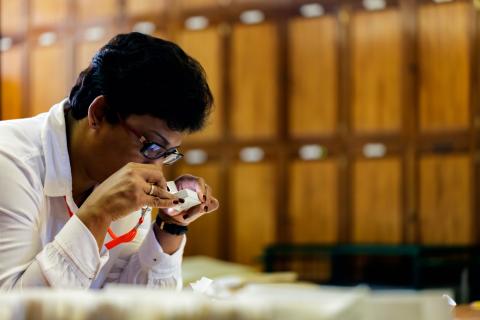
I am Senior Curator of Lichens and Slime Moulds at the Natural History Museum, London. My research interests are focused on the taxonomy and ecology of tropical lichens, bioindication and conservation of lichenised fungi in endangered habitats. My main responsibility as the Senior Curator of British, General and Historical herbaria is to manage and develop one of the world’s largest lichen collections, lichenicolous fungi and slime moulds with app. 450,000 specimens. The collection includes non-lichenised fungi and the earliest scientifically accurate collection of fungi models by J. Sowerby. I am interested in making the collections available for both scientific and historical research.
I have spent much time in the field in South and Southeast Asia observing lichens in their native habitats and described many new lichen species, mostly in Graphidaceae from the Old-World tropics. My current projects involve:
- Collaborative research in renewable sources of bioactive products from endolichenic fungi in mangrove ecosystems.
- Ecological relationships and bioindication of tropical lichens in threatened habitats in the tropics.
- Documentation of the lichen flora in the world and describe novel species.
During my PhD and Post-doc, I mostly focused on lichen taxonomy, distribution, and use of lichens for biomonitoring. It helped me to secure my current position at NHM. I have been privileged to visit many countries and to work with many colleagues on collaborative projects. Lichens have opened a new door to understand how small things like lichens could support the environmental functioning. My favourite lichen is Graphis srilankensis.
Heleen Plaisier - Assistant Curator for Cryptogams
Royal Botanic Garden Edinburgh
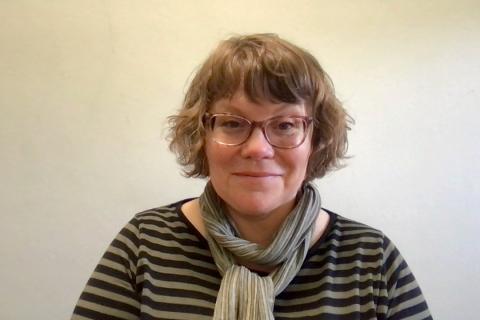
Hi, I am Heleen Plaisier, I work as Assistant Curator for Cryptogams in the Herbarium of the Royal Botanic Garden Edinburgh (RBGE) in Scotland. My job involves the looking after the dried algae, fungi (including lichens), mosses, liverworts and fern collections, these have been collected across the globe over the last 300 years, and are preserved in the RBGE Herbarium.
I have always had a strong interest in curation, but I didn’t really train for it! I started out in linguistics, documenting an endangered Himalayan language for my PhD, and later I described, catalogued and digitized fragile and rare Himalayan manuscripts in the field so that they could be preserved digitally. After this I did additional training in botany out of personal interest, including several lichen identification courses, which ultimately led another degree in plant taxonomy and an interest in Herbaria. I did a lot of volunteering in herbaria before I got this job.
I love my job because it brings together a lot of my interests and skills. The job focuses on processing incoming specimens, supporting loans and sampling of specimens, and providing support for users of the collections. I spend a lot of time carefully packaging up lichens, other fungi and bryophytes before they can be added to the RBGE Herbarium. I really enjoy finding out more about the people who collected the specimens. Databasing collection details (where was a particular specimen collected, who by, when, etc.) is also something I do regularly, and for this I often have to decipher handwritten lichen names and collection notes in many different languages – which means my linguistic background comes in handy. I also get to spend time with the many different people who use the collection, and think about the best ways I can support their interests whilst also caring for and preserving the RBGE collection.
Curating lichen specimens can be quite difficult, some are on rock, some on soil, some on bark, some are light, some are heavy, some are tiny, and others are bulky – but I enjoy the challenge!
GOVERNMENT BODY
Matt Wainhouse - Fungi and Lichen Senior Specialist
Natural England
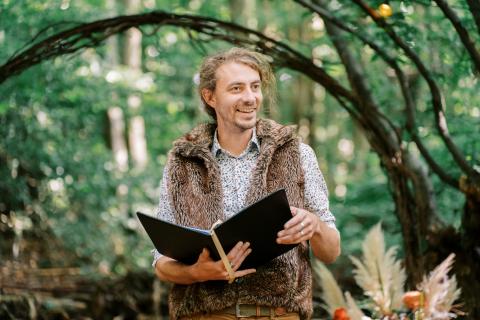
My route towards lichenology has been a meandering one. I am a passionate ecologist and life-long naturalist, but it was botany that first got me walking down this path during an MSc in Biodiversity and Conservation. This led to an early career in ecology consultancy where most of my work was in plant and habitat ecology, habitat creation and management for environmental impact assessments.
A creeping interest grew in kingdom fungi as I became increasingly fascinated by these unsung heroes. One of the things that struck me was just how many gaps there are in our mycological knowledge. Fascination grew to fanaticism and I made the rash decision to jack in the day job and take up a part-time PhD in fungal ecology and conservation. It was towards the end the PhD I began to work at Natural England as a Specialist in lichenised and non-lichenised fungi.
In this role I am responsible for giving technical advice to the organisation on fungal matters. But what I do on a day-to-day is almost so varied that it defies description – research, education, policy advice. My role sits with the Science Directorate under the Chief Scientist. Naturally then my role is evidence-led and one of the most exciting parts is in collaborating on ecological and conservation research projects. Another big area for me is in the substantial number of SSSIs designated for their incredible lichen communities so a major part of my work is advising on their monitoring and management, and even helping to create new ones. One of the best things about SSSI work is getting to visit them, and invariably they are some of the country’s most spectacular nature sites – I have to pinch myself sometimes in disbelief that its work!
Perhaps the single greatest thing about this role is the people I get to work with. Everyday I find myself in conservation or collaboration with some of the most interesting and passionate people I could hope to meet, on things I would need lifetimes to learn. I consider myself, in broad terms, a fungal ecologist and I’m reminded everyday of how little I really know, but I do feel blessed to be able to draw on the knowledge and experience of many of the other lichenologists listed here. Its humbling.
I love coming to work. I am really busy all the time, there is loads of really tedious admin, and the money is really cr*p, but it’s worth it.
Sam Bosanquet - Specialist Advisor: Bryophytes, Lichens & Fungi
Natural Resources Wales
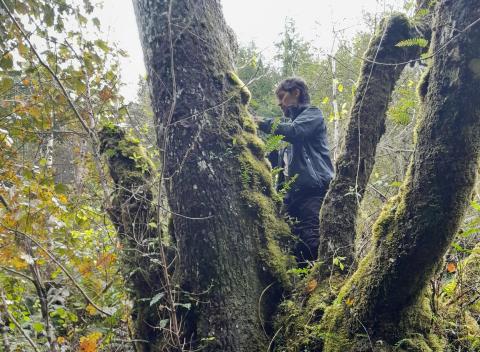
My day to day job is advising colleagues in Natural Resources Wales how to protect and strengthen populations of lichens, bryophytes and fungi during the organisation’s operations. NRW has a wide remit: combining conservation work equivalent to Natural England, regulatory work equivalent to the Environment Agency, and timber production and woodland management equivalent to the Forestry Commission. I am involved to a greater or lesser extent with all of these functions: for example feeding into NRW’s policies on intensive agriculture regulation to protect lichens, pushing for proactive Metallophyte survey work to guide metal mine remediation work, advocating management changes to benefit lichens during PAWS ‘restoration’, ensuring that SSSI bryophyte and lichen features are considered at the start of any Hydropower proposals, and supporting SSSI notifications and monitoring. Providing advice on the conservation needs of several thousand species is both exciting and overwhelming.
I have been a naturalist all my life, looking at flowers and butterflies with my Mum and Granny, then getting into birds and moths at school, and then shifting into bryophytes after leaving university. I did a degree in Biological Sciences at Oxford, which honed my critical thinking, but my ecology was self-taught at first and then learned from friends and colleagues. I was offered my first job – as a ‘Site Safeguard’ maternity cover with the Countryside Council for Wales – on a BSBI walk (well, they suggested I should go for an interview and that went well). Since then I have worked for CCW and its successor body NRW for nearly 25 years. For most of that time I focused on bryophytes, leaving lichens to other experts in Wales, but the threat to lichens from intensive agriculture galvanised me into studying at least the epiphytic species and I now have enough of a knowledge of the more distinctive epiphytes that I know when to call in an expert!
I like my job because I am paid to do something that I really care about: it isn’t just a job, it’s a vocation. The pay isn’t great (but it isn’t too bad either) but I have the chance to influence conservation and regulation directly. If there wasn’t somebody within the Agencies ensuring that lichens, bryophytes and fungi are considered, and to judge when surveys or practices are acceptable, then I have little doubt these species groups would be largely ignored.
THIRD SECTOR
Dave Lamacraft - Lichen & Bryophyte Specialist
Plantlife International
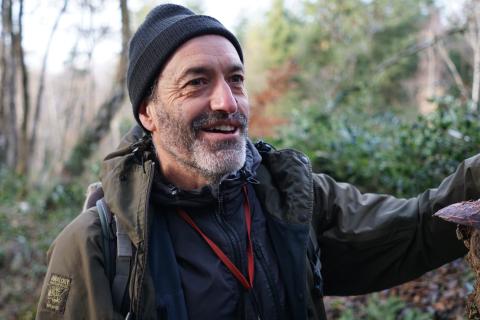
My role is essentially to provide expertise and advice on lichens and bryophytes across Plantlife's work, with a particular focus in England and Wales. This can include anything from working on organisational strategy to undertaking lichen surveys. Much of the focus of my work is on promoting and delivering favourable management of habitats for lichens and bryophytes and as Plantlife don't own much land this means working in partnership with those that do. This part of the job involves developing good working relationships with site managers and partner organisations alongside things like developing funding bids and delivering any projects that result from the bids, delivering training for site managers and writing guidance material.
I decided in my teens that I wanted to work in nature conservation, did a degree in geography, and was then lucky enough to land some temporary work with the RSPB shortly after. This lead to more contracts with the RSPBs regional and conservation science teams after a season on the Farne Islands for National Trust. Longer contracts then came which lead to a move into RSPB Cymru's conservation team where I then worked for about 15 years. Always interested in nature beyond birds, it was towards the end of this stint that I became more involved in lichens and bryophytes through projects on various RSPB reserves. This lead to my first job at Plantlife which was a secondment arrangement with RSPB, where I worked for both organisations. This ultimately led on to my current job at Plantlife. The majority of my lichen knowledge is self taught, but I have been very well placed to learn from Britain's top lichen experts through my work.
I like lots about it, it's very varied and I get the opportunity to get out and about looking at lichens and bryophytes on some of Britain's best sites, but I probably most like the satisfaction that comes when something works, like when you get that project funded and off the ground, or when the habitat management you recommended actually works.
Much of my lichen work is around temperate rainforest, oceanic woodland, wood pasture and more recently Breckland grassland.
April Windle – Project Officer (Looking Out for Small Things)
Plantlife International
Hello, my name is April. Back in 2018, I was lucky enough to work for Plantlife International, delivering a two-year, Heritage Lottery Funded project called “Looking Out for Small Things”, which focused on lichens and bryophytes in the Lake District. In this role as Project Officer, no two days were ever the same, ranging from coordinating a traineeship, to advising land managers, delivering school workshops, managing a citizen science initiative and organising a photography competition and touring exhibition – safe to say, the workload was extremely varied and…monumental!
When I initially applied for this job, it was in the early stages of my career (youthful age of 24) and I had zero expectations of a successful application, but was keen to apply to receive feedback on my CV - so I could continue to tailor my experience accordingly. On paper, this was my dream job! Upon receiving the job offer, I couldn’t quite believe it, as in hindsight, I was completely underqualified and I lacked some pretty important project management skills. However, this was acknowledged by the interviewers, but was told it was my enthusiasm and unrequited passion for lichens that got me the job. Apparently, other candidates that were interviewed had decades of experience working with woodlands - which goes to show, a love and interest in what you do can go a very long way. Despite what I term my “inexperience”, upon leaving Plantlife, I was told it was one of the most successful projects the charity had ever delivered!
I always knew I wanted to work in the nature sector (raptor conservation originally), having worked as a falconer at a falconry / rescue centre since I was 16. I was then accepted to study Zoology at the University of Roehampton. After completing my degree, like most graduates, it was impossible to “gain experience without experience”, so, I worked as a fundraiser for the RSPB (four days a week) and volunteered the other three at Devon’s Biological Record Centre and Dawlish Warren Nature Reserve. The unsustainability of working seven days a week started to take its toll, but then was offered a golden ticket to complete an internship at the Exmoor National Park Authority. This is where I discovered lichens growing in the remarkable Atlantic oakwoods of the Barle Valley. This internship, quite literally changed my life! Subsequent to this, I was accepted onto a traineeship at the Natural History Museum, where I spent a solid year studying lichens, with access to the finest resource on the planet – the Cryptogamic Herbarium, which housed over 400,000 specimens of lichens. The three years after graduating, were nothing but relentless graft – but it paid off, as this experience paved the way for me to get my job working for Plantlife (2018 – 2020).
Short term projects, that are both internally or externally funded, come about relatively frequently and they are so, unbelievably rewarding. Being paid to work with lichens, alongside friendly people, whilst exploring one of Britain’s most spectacular landscapes and feeling inspired every day - has undoubtedly been one of the highlights of my career.
LICHEN CONSULTANTS
Neil Sanderson – Lichen Consultant
Sole Trader / Freelance at Botanical Survey & Assessments
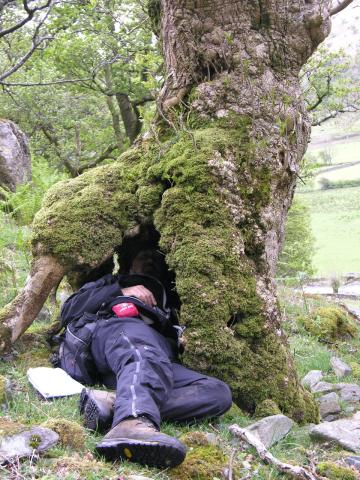
Botanical Survey & Assessments was initially a varied botanical consultancy, which included planning work and conservation surveys. The planning covered vegetation mapping (Phase 2 NVC) and botanical survey, ancient woodland work and ecological landscape history. Conservation surveys concentrated on heathland and pasture woodland habitats and on lichens. The consultancy has now stopped planning work and concentrates on lichen work. The work involves field work that rapidly collects a lot of data and then long periods at the computer analysing the data and producing reports.
I studied B.Sc. Botany (Aberdeen) and M.Sc. in Plant Taxonomy (Reading), but much of the expertise required was gained from work experience and learned identification skills. For me, working on a Manpower Services scheme for unemployed people on a Hampshire County Council project carrying out habitat surveys was an important start. During this, Francis Rose introduced me to lichens on a training day, where I then worked as a freelance surveyor for various clients, but initially with an association with one planning consultancy for planning work. At the beginning, lichen work was limited but this built up through the years. My specialisms are now mainly working on pasture woodland and heathland lichens.
Why do I like my job? Being out in the field, finding intriguing things and then being able to explain them. I encourage anyone and everyone into studying lichens, because there is more work than I can cope with - get in there.
Andy Acton – Lichen Consultant
Sole Trader / Freelance
I undertake ecological field surveys for a variety of conservation organisations (e.g. Woodland Trust, RSPB), government agencies (e.g. Forestry Commission), research organisations and developers.
I have a degree in biology but it was the Training for Work scheme in habitat surveying (a practical HNC with the Scottish Wildlife Trust) and a stint of voluntary work that really got me going in survey work (Phase 1 vegetation and NVC). In 2004 I was lucky to be accepted onto a Scottish Lichen Apprentice scheme which involved mentoring from expert lichenologists who were keen to pass on their field knowledge.
Since then I have built up my field experience and now more than half of my work involves lichen survey; other work includes general habitat surveys, woodland surveys, habitat condition surveys, monitoring and herbivore impact assessments.
I now specialise in Rainforest lichens, mostly in Scotland (I have learned to cope with the midges!), but I’m fortunate to have worked throughout Britain and Ireland in a wide variety of habitats from the islands to bogs to the mountains.
John Douglass – Lichen Consultant
Sole Trader / Freelance
Following my degree in Environmental Science (Biology and Geography), I volunteered for the Hartlepool Countryside Wardens, eventually I landing a Seasonal Countryside Ranger Job leading to full time Countryside Ranger work in South Lanarkshire. Whilst in this position I was allowed to pursue my interest in plant identification and ecology (thanks to a very sympathetic boss). I then stumbled upon a local botanist Bryan Simpson with a keen interest in bryophytes who helped with my plant ID’s and taught me how to identify bryophytes and the various micro-habitats they occupy. Bryan had an interest and basic knowledge of lichens, but it was another Brian (Coppins) who together with his wife Sandy, helped further my studies in lichenology.
A week long residential FSC course at Kindrogan fuelled my interest in lichens. I was then given a BLS small ecological grant (administered by Oliver Gilbert) to continue my local lichen study at Whitelee Forest. The BLS had identified a need for new talent as the lichenologists of the ‘Golden Era’ were getting older and fewer means of studying lichens were available through traditional routes in schools, colleges and universities. The Scottish lichen apprentice scheme came into being (part funded by SNH and generously organised by Brian and Sandy Coppins). Expenses were provided for training to attend BLS field meetings and to shadow lichenologists working in the field. I was also allowed 10 days paid leave as part of my Ranger work for lichen studies. As part of the Scottish lichen apprentice scheme Brian and Sandy organised a Rockers Workshop in 2005 which included the top experts in montane lichens including Brian Coppins, Alan Fryday, Alan Orange and Steve Chambers.
There is a strong element of self-reliance, resilience and perseverance required as well as a need for some tuition and assistance in identifying specimens. There were moments along the road when I felt like jacking it in, but was helped through by the BLS (a family of friendly people who understand the difficulties and hurdles that a rookie lichenologist faces). Brian and Sandy have been a constant support together with Alan Orange who will been keenly missed. The BLS field meetings are great places to learn from experts and intermediates (all are welcome and there is no such thing as a daft question). Lichenology is a ‘slow release’ sport with new things to be learnt every day, no matter what your level of knowledge.
I began lichen studies in 2000. I studied them intensely for at least five years, before I began taking on work supported by other lichenologists. Identification is critical and often difficult, but nearly always rewarding, even if it’s not the answer you wanted or expected. Be prepared for regular ‘egg on the face’. Humility being an essential requirement.
I have specific interests including freshwater, montane, heathland and Irish lichens.
ADVANCED STUDY (PhD & POSTDOC)
Dr Nathan Chrismas - Postdoctoral Researcher
Marine Biological Association
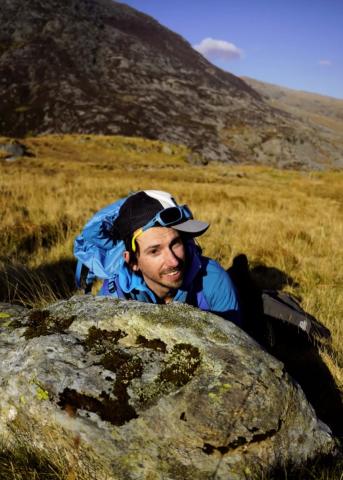
I’m Nathan, and I’m a lichenologist. After beginning a career in ecology and microbiology in my late twenties, my journey in lichenology began in 2020, emerging as a synthesis of my PhD work on cyanobacteria and postdoctoral research on fungi - just like the lichens themselves!
I’m really interested in how lichens work at a molecular level, especially how nutrients get from one member of the symbiosis to the other, and I use lichens from rocky seashores and mountains to examine these processes in environmental settings.
Although a lot of my time is spent working at the computer on big molecular datasets I take every opportunity to get out and look at lichens in the field, and I love being able to combine lichenology with my other passions of rock climbing and hillwalking.
Theo Llewellyn - Postdoctoral Researcher
Natural History Museum
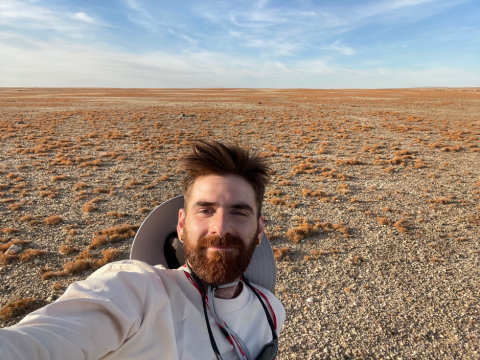
Hi, I’m Theo, a postdoctoral researcher at the Natural History Museum and Imperial College London. I’ve just finished my PhD at Royal Botanic Gardens Kew where I was looking into the evolution of pigments in lichens and how they use them to survive in harsh ecosystems like deserts and mountain ranges.
My PhD switched between fieldwork, lab work and data analysis. I’ve been lucky enough to take part in fieldtrips both in the UK and abroad, to collect lichen samples for my work. I then take these samples to the lab where I extract their DNA and pigments in order to study their genomes and metabolomes. I really enjoy the bioinformatics side of my work, designing new methods to analyse our lichen data. I got into lichens through an undergraduate course during my year abroad at the University of Barcelona. When I came back to the UK, I continued with a part-time internship at Kew which led on to my masters and PhD project.
I love getting to read, write and chat about lichens with people from all over the world and have a guilty pleasure for making pretty graphs and images for publications and presentations (admittedly spending far too long choosing colour palettes). Even from the start of my PhD to now, I have seen lichens and lichenologists becoming more visible in the wider research world. People outside the field are starting to appreciate them and it seems like a great time to get into lichen research.